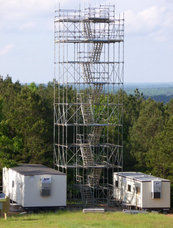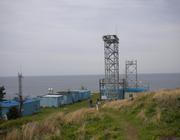
The Tropospheric Oxidation Capacity Research Group
Biosphere-Atmosphere-Human Interactions
3216 Croul Hall Irvine CA 92627 (email)

Role of convection in redistributing formaldehyde to the upper troposphere over North America and the North Atlantic during the summer 2004 INTEX campaign
Journal:
Journal of Geophysical Research-AtmospheresVolume Number:
113Issue Number:
D17Abstract:
Measurements of formaldehyde (CH(2)O) from a tunable diode laser absorption spectrometer (TDLAS) were acquired onboard the NASA DC-8 aircraft during the summer 2004 INTEX-NA campaign to test our understanding of convection and CH(2)O production mechanisms in the upper troposphere ( UT, 6-12 km) over continental North America and the North Atlantic Ocean. The present study utilizes these TDLAS measurements and results from a box model to ( 1) establish sets of conditions by which to distinguish "background'' UT CH(2)O levels from those perturbed by convection and other causes; ( 2) quantify the CH(2)O precursor budgets for both air mass types; (3) quantify the fraction of time that the UT CH(2)O measurements over North America and North Atlantic are perturbed during the summer of 2004; ( 4) provide estimates for the fraction of time that such perturbed CH(2)O levels are caused by direct convection of boundary layer CH(2)O and/or convection of CH(2)O precursors; ( 5) assess the ability of box models to reproduce the CH(2)O measurements; and ( 6) examine CH(2)O and HO(2) relationships in the presence of enhanced NO. Multiple tracers were used to arrive at a set of UT CH(2)O background and perturbed air mass periods, and 46% of the TDLAS measurements fell within the latter category. In general, production of CH(2)O from CH(4) was found to be the dominant source term, even in perturbed air masses. This was followed by production from methyl hydroperoxide, methanol, PAN-type compounds, and ketones, in descending order of their contribution. At least 70% to 73% of the elevated UT observations were caused by enhanced production from CH(2)O precursors rather than direct transport of CH(2)O from the boundary layer. In the presence of elevated NO, there was a definite trend in the CH(2)O measurement-model discrepancy, and this was highly correlated with HO(2) measurement - model discrepancies in the UT.
Notes:
Times Cited: 4
Related External URL:
<Go to ISI>://WOS:000259000400004- Citation:
- Fried, A, Olson JR, Walega JG, Crawford JH, Chen G, Weibring P, Richter D, Roller C, Tittel F, Porter M et al.. 2008. Role of convection in redistributing formaldehyde to the upper troposphere over North America and the North Atlantic during the summer 2004 INTEX campaign. Journal of Geophysical Research-Atmospheres. 113(D17)

